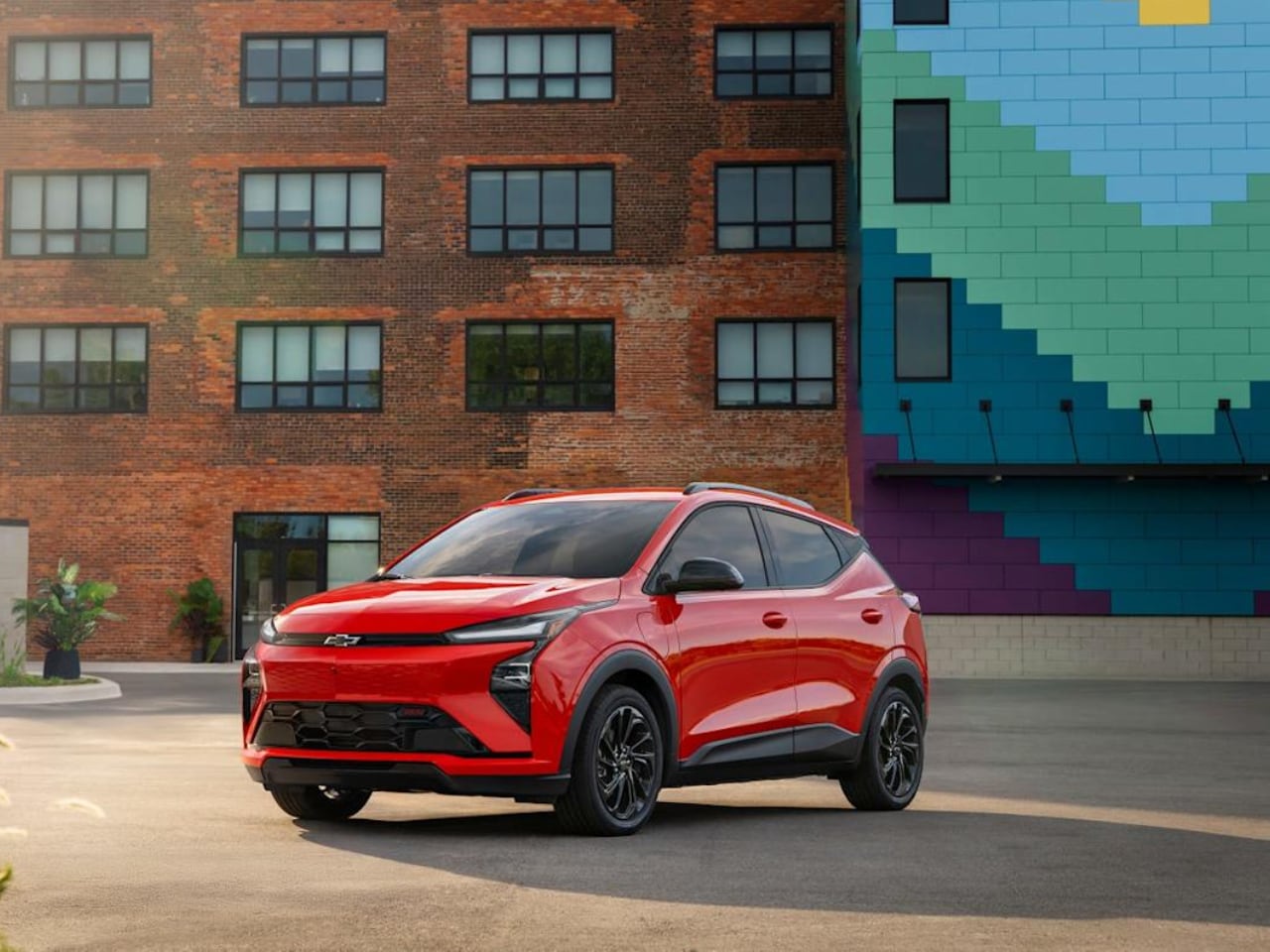General Motors has officially revealed the complete specifications for the 2027 Chevrolet Bolt, ending months of speculation about America’s most anticipated electric vehicle return. After a decade of covering automotive launches, few announcements have carried this level of industry significance: a sub-$30,000 electric vehicle that prioritizes thoughtful design over flashy features.
The stakes couldn’t be higher. With the original Bolt contributing to one-third of GM’s aggregate EV program losses, according to GM’s own analysis, this resurrection represents more than product revival. It demonstrates whether intelligent design constraints can deliver profitable electric mobility for mainstream America.
Interior Architecture: Dual-Screen Command Center
The 2027 Bolt’s cabin transformation centers on a dramatic dual-display configuration that rivals vehicles costing twice its price. An expansive 11.3-inch infotainment touchscreen dominates the dashboard center, complemented by an equally impressive 11-inch customizable digital driver display. This isn’t mere screen enlargement; it represents a fundamental rethinking of information hierarchy in compact vehicle design.
The most significant architectural change involves the new column-mounted shifter, which eliminates the traditional center console gear selector entirely. This space optimization creates an open storage area between front seats, reflecting contemporary automotive design trends toward maximizing utility in constrained footprints. Enhanced passenger dashboard storage solutions provide additional organizational options throughout the cabin, while an optional panoramic sunroof brightens the interior atmosphere.
GM’s decision to integrate Google’s native infotainment system directly into the vehicle architecture eliminates Apple CarPlay and Android Auto support entirely. This Google Built-in approach provides direct access to Google Maps, Google Assistant, and Google Play Store, including streaming services like HBO Max and Prime Video during charging sessions. The system even supports gaming, with Angry Birds available as charging entertainment. Voice command functionality extends beyond entertainment to control climate systems, seat heating, and smart home devices like garage door openers.
Exterior Design Evolution: Refined Rather Than Radical
The exterior design maintains the Bolt’s established visual DNA while addressing key user complaints from the previous generation. GM listened to Bolt EV and EUV owners regarding taillight positioning, moving them from below the hatch door to their expected location. This seemingly minor adjustment represents thoughtful user experience design, proving that effective updates don’t require complete redesigns.
The front fascia receives subtle but meaningful refinements, with the area surrounding the Chevrolet bowtie redesigned to break up the previously solid body-color treatment. The primary grille opening moves to the bottom of the fascia, following GM’s “mouth breather” design philosophy for electric vehicles. These changes create a more contemporary aesthetic while maintaining manufacturing efficiency through shared tooling with the previous Bolt EUV platform.
Color options expand to seven choices, including striking new hues like Marina Blue and Habanero Orange. The performance-oriented RS variant introduces exclusive design elements: high-gloss black wheels, unique roof rails, and Atomic Yellow paint with coordinating red interior stitching details. These design choices allow personal expression while maintaining cost-effective production strategies.
Technology Integration Through Sustainable Design
The charging experience receives particular design attention through Chevrolet’s first native NACS (North American Charging Standard) port, providing direct compatibility with Tesla’s extensive Supercharger network. This represents more than connector standardization; it demonstrates how thoughtful infrastructure integration can expand vehicle utility without adding cost complexity.
The 150 kW DC fast charging capability enables 10-80% charging in just 26 minutes, representing a threefold improvement over the previous generation’s 55 kW maximum. This performance leap results from integrating GM’s Ultium platform battery technology, specifically a 65-kWh lithium-iron-phosphate battery pack that balances cost, charging speed, and range.
Vehicle-to-Home (V2H) capability transforms the Bolt from transportation device into home energy solution, delivering up to 9.6 kW to power essential household systems during outages when paired with GM’s Energy Home System. This bidirectional charging functionality represents forward-thinking vehicle design that acknowledges electric vehicles’ evolving role in domestic energy management.
Sustainable Engineering: The X76 Drive System
Beneath the design updates lies GM’s X76 electric drive unit, shared with the Chevrolet Equinox EV, delivering 210 horsepower and 169 lb-ft of torque to the front wheels. This represents a 10-horsepower increase over the previous Bolt EUV while utilizing proven technology to maintain reliability. The permanent-magnet motor incorporates minimal rare-earth materials while using segmented magnets that reduce heat buildup and energy loss.
Silicon carbide inverter technology further minimizes energy waste between the battery pack and drive unit, contributing to the vehicle’s GM-estimated 255-mile range. This represents a modest improvement over the previous Bolt EUV’s 247-mile capability, prioritizing charging speed improvements over maximum range extension.
The integration of a standard heat pump enhances cold-weather efficiency, addressing a common complaint about electric vehicle performance in northern climates. These engineering choices demonstrate how sustainable design can improve user experience while controlling manufacturing costs.
Market Strategy: Design Within Constraints
The 2027 Bolt’s design philosophy reflects GM’s commitment to profitable electric vehicle manufacturing at accessible price points. The Launch Edition starts at $29,990, including destination charges, with later LT trim models dropping to $28,995. The RS variant, priced around $32,000, provides enthusiast design elements while maintaining the core value proposition.
This pricing strategy becomes possible through intelligent design constraint management. By utilizing the previous Bolt EUV platform and optimizing component sharing, GM enables sub-$30,000 electric vehicle pricing while integrating modern technology features. The “limited run” production status adds exclusivity without compromising accessibility, with production scheduled to begin at GM’s Fairfax plant in Kansas City.
Advanced safety systems integrate seamlessly into the design architecture, with over twenty standard safety and driver assistance technologies including Intersection Collision Mitigation and Rear Cross Traffic Alert with Braking. Optional Super Cruise hands-free driving technology will be available, positioning the Bolt in autonomous driving conversations typically reserved for premium vehicles.
This design resurrection demonstrates how automotive manufacturers can successfully balance affordability with innovation, creating vehicles that serve practical transportation needs while addressing aspirational design desires in an increasingly electrified automotive landscape. The 2027 Bolt proves that thoughtful constraints, rather than unlimited budgets, often produce the most compelling design solutions.
The post Chevrolet’s Electric Comeback: How the 2027 Bolt Redefines Affordable EV Design first appeared on Yanko Design.

